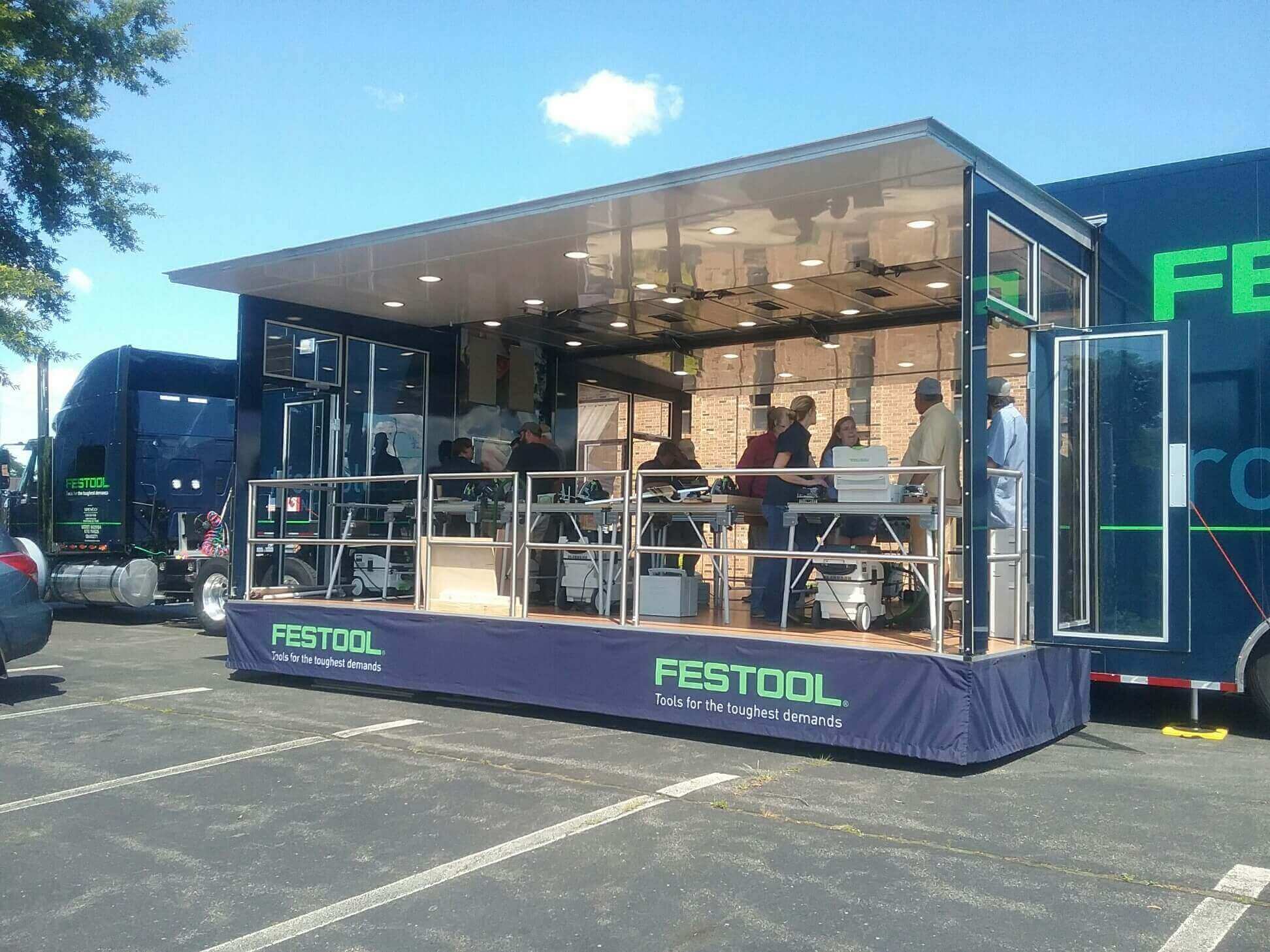After decades of experiential vehicle development, SPEVCO has much to share about creating unique, compelling specialty vehicles for a variety of applications. This blog series is designed to share some of what we’ve learned with a focus on topics for marketing professionals who are interested in maximizing the efficacy of experiential marketing strategies.
While many of the articles in this series relate to different vehicle projects, if you are interested in developing a specific vehicle for training, mobile medical, or industrial needs, please contact our team directly.
In this first article in the series, we’re covering a lot of ground to give those who are new to the concept a thorough understanding of what experiential marketing vehicles are and what they are not.
Mobile marketing vehicles have been around for a long time. Over the years, they have evolved into an impactful, measurable way to engage target audiences, build brand awareness, develop affinity and capture valuable insight into how your customers perceive and interact with your products or services. The key is creating an experience that immerses your customer in your brand.
Defining Experiential Marketing
Experiential marketing is about creating temporary environments that embody what and who you are as a brand in context of a larger event or setting. This goes beyond a “tent and table” set up, of course. But it’s also not just about Times Square takeovers or tractor trailers that transform into spaceships (although, that can be arranged).
The real power of experiential marketing is in its ability to engage with people out in the world through events and activities that matter to them. And when you can make that experience transportable, you then have the ability to duplicate that engagement over and over again in different markets with different consumers.
These “roadshows” create an ideal platform for a wide range of activities, including:
Product demonstration:
Particularly for brands launching new products, getting that tech in the hands of the right people can be a challenge. We see this in B2B experiences as well. Manufacturing and construction equipment providers, for example, are able to bring high-end equipment for hands-on demonstrations that get decision-makers excited about innovating.
Affinity and personal connection:
Rather than being a store on wheels, experiential marketing vehicles provide a full, sensory experience where customers actively interact with the physical and emotional aspects of your brand. It’s where you have a unique opportunity to influence how they think and feel about your brand face-to-face.
Data capture and lead generation:
If you’ve chosen the right events for your vehicle, you should have a highly concentrated number of people representing your target audience flowing through your space. When you think of experiential marketing as part of a larger marketing mix, you start to see how it can work as another opportunity for capturing data and generating leads for ongoing communication with prospects and customers.
Before moving on, it’s important to note what experiential marketing is NOT -
First, they are not an all-or-nothing solution to your marketing. Effective marketing strategies leverage multiple tools and channels based on achieving specific brand and business objectives. An experiential roadshow should be an extension of your strategy that gives consumers a pathway into your brand.
Direct sales? Proceed with caution when it comes to direct selling in an experiential marketing context. It should fit the situation. Experiential efforts that come with a catch of having to be “sold to” generally miss the mark.
Lastly, experiential marketing is not one-size-fits-all. Vehicles can be created in all shapes and sizes. From small trailers to food trucks to custom vans to full tractor trailers and beyond. Whatever form it takes, the experience needs to be built to fit your brand, budget, objectives and event footprint.
For instance, building a massive semi-trailer for a well-known bicycle brand sounds like a great idea. But we built a smaller trailer that created an accessible, engaging space for enthusiasts to hang out. Why? It was more in line with the brand and was a better fit for the tight spaces that were typically closer to the action at racing events.
Why are experiential marketing vehicles effective?
The big advantage experiential marketing has over other channels is the ability to capture all of the consumer’s senses in one experience. This immersive quality allows people to forge a connection with a brand that is beyond transactional. The consumer becomes involved with the brand’s story in a measurable, enduring way.
And when that experience is built into the right transportable format, it becomes repeatable with more consumers in more markets, as well as flexible enough to be refined and improved over time.
We’ve not only seen it work effectively for our clients, but the value is being seen across the board for marketers interested in involving consumers with their brands.
A Freeman Global Brand Experience Study featured in AdWeek revealed that:
“…One in three CMOs is expected to allocate between 21 and 50 percent of their budget to brand experience marketing over the next three to five years.
“Brands say that when it comes to data and measurement, they have moved from being passive (hoping that an experience is so impressive that people post about it on social media) to being active (including data points and tracking as part of the experience or integrating social efforts that make people use the brands’ hashtags or geofilters) to guarantee that they will have the analytics they need...”
Industry organizations note that not only do experiential marketing efforts work, they are successful because they meet a growing desire by people to be participants instead of viewers.
- 93% of consumers claimed that live events had a larger influence on them than TV ads. (Statista)
- 74% of event attendees say they have a more positive opinion about the company, brand, or product being promoted after the event. (EventTrack)
- 98% of users feel more inclined to purchase after attending an activation. (EventTrack)
- 80% of attendees said that live demonstrations and free samples significantly help define their purchasing decision. (EventTrack)
- 98% of consumers create digital or social content at events and experiences (and 100% share the content). (EventTrack)
Steve Olenski, a CMO network contributor at Forbes.com, agrees, pointing out that “most people will go out of their way to avoid commercials, yet most will also go out of their way for a new experience.”
But is an experiential marketing vehicle right for you?
It would be easy for us to say, “of course it is!” But in reality, there are several points to consider, some of which we’ve touched on already in this article. Objectives, budget, time, logistics, ROI… for starters. Our next article in this series dives into those considerations in more detail. Read more.
It can also be helpful to talk with a partner who knows the experiential marketing vehicle and event industry, just to get a sense of what is involved in creating, running and maintaining a specialty vehicle. Talk with one of our experts to learn more.
References:
- 3 Reasons Why CMOs Should Embrace Experiential Marketing
- What is Experiential Marketing?
- 10 Experiential Marketing Statistics You Should Know In 2018
- Brands Are Doing More Experiential Marketing. Here’s How They’re Measuring Whether It’s Working.





